Let’s go over the options to help you decide which one is right for your organisation.
Jump to Section
- Lightning for Gmail/Outlook
- Salesforce Inbox
- Salesforce Lightning Sync
- Einstein Activity Capture (EAC)
- Our Verdict
- Further Reading
- Need help?
Lightning for Gmail/Outlook
Lightning for Gmail/Outlook is included with your Salesforce licence, and allows your users to manually link their emails to records in your Salesforce CRM. These updated apps are easy to use, having been designed to be lightweight and minimal on features.
Lighting for Gmail/Outlook is highly customisable. You can easily customise the panes, add or remove record information, and have an impact on how users engage with the app all through the Lightning App Builder.
Salesforce Inbox
Salesforce Inbox is a paid email integration app from Salesforce that is folded into the Lightning for Gmail/Outlook architecture. Upon purchase, users will have enhanced capabilities, such as:
- Email tracking stats (i.e. who opened the email, and how many times)
- Scheduled sending
- Meeting scheduler and calendar booking tools
- Email templates
- Dedicated mobile app
However, neither Lightning for Gmail/Outlook nor Salesforce Inbox allows users to sync their calendars to Salesforce. This is where Lightning Sync and Einstein Activity Capture (EAC) come in.
Salesforce Lightning Sync
Similar to Lightning for Gmail/Outlook, Lightning Sync is an app already included with your Salesforce licence. This tool syncs your calendar from Exchange or G Suite to Salesforce automatically (in the background) every 15 minutes. Lightning Sync can also be configured to sync Contacts between Salesforce and Exchange or G Suite.
It’s important to read the considerations for Lightning Sync so that you correctly configure your settings, and you’re able to communicate with users. Lightning Sync can only relate the Events to records in Salesforce when an attendee’s email address matches that of a Lead or Contact in Salesforce.
Einstein Activity Capture (EAC)
Einstein Activity Capture has the same functionality as Lightning Sync, but it also automatically logs emails (both incoming and outgoing) in addition to events. EAC works in the background as well, so no user intervention is required.
Benefits of Einstein Activity Capture
Email Insights
Since the email data is processed by the Einstein AI layer when it’s passed through Einstein Activity Capture, Salesforce is able to offer users useful information about the email they have logged, including a suggested next action based on the email content, or helping them to craft a more tailored response to a client.
Send Email through Connect Email Account
When you send emails through Salesforce, they are typically sent via Salesforce’s email servers, which tacks on a “on behalf of” text in the From field. As this can impact deliverability, EAC allows emails to be sent through a connected email account in Salesforce.
Recommended Connections
With the Winter ’19 release, a new Einstein feature called Recommended Actions shows important connections within their networks (i.e. fellow Salesforce users). Einstein shows how many interactions another user has had with a Lead or Contact so you can ascertain whether working with a person would be of benefit.
Activity Metrics
One of the top benefits of Einstein Activity Capture is its calculated activity metrics. As Salesforce analyses activity data with Einstein AI, Salesforce calculates important metrics, including Last Activity Date, Inactive Days, and Last Call Date.
Activities Dashboard
The Activity Dashboard displays a summary of sales activities that were added to Salesforce manually and via Einstein Activity Capture. These metrics are in the Analytics app under Setup. The only downside is that these dashboards aren’t customisable yet, so you can only view these built-in metrics.
Drawbacks of Einstein Activity Capture
Activities Stored Outside of Salesforce
Activities captured by Einstein Activity Capture aren’t saved in Salesforce. They’re housed in a secure server outside of Salesforce which presents a number of issues:
- Activities can’t be reported on with standard Salesforce reports (hence the Activities Dashboard & Metrics).
- Users cannot delete emails from Einstein Activity Capture. Only a System Administrator has this ability.
- If you decide to deactivate Einstein Activity Capture, all of the activities captured by EAC will no longer be displayed in Salesforce on record timelines.
Unfortunately, these limitations can be a dealbreaker for some clients.
Additional Limitations
Other limitations to note are:
- Potential additional licensing costs (i.e. only 100 Einstein Activity Capture licences are included with Sales Cloud).
- Only 24 months of captured activity data is saved and displayed.
- Orgs need to use the Activity Timeline with Einstein Activity Capture. You can’t use the Related List view for activities.
- Emails within a user’s internal domain aren’t associated with Salesforce records
- Platform Encryption isn’t supported, so emails and events added to Salesforce by EAC aren’t encrypted.
- Recurring events are not synced with EAC.
Our Verdict
We hope this has provided you with a clear understanding of the options, and will help you determine the best method to integrate emails and calendars in your org. Considering the existing feature sets and limitations, we recommend Lightning Sync over Einstein Activity Capture for now.
Further Reading
- Compare Einstein Activity Capture and Lightning Sync
- Lightning Sync vs Einstein Activity Capture: Battle of the Salesforce Calendar Integration Tools
- Things To Know About Einstein Activity Capture
- Help Sales Reps Sync Contacts and Events with Lightning Sync
- Sales Productivity: Einstein Activity Capture
Need help?
Get the most out of your Salesforce product. Our Salesforce experts are are ready to help you with all your Salesforce needs. Send us a message by filling out the form below.

